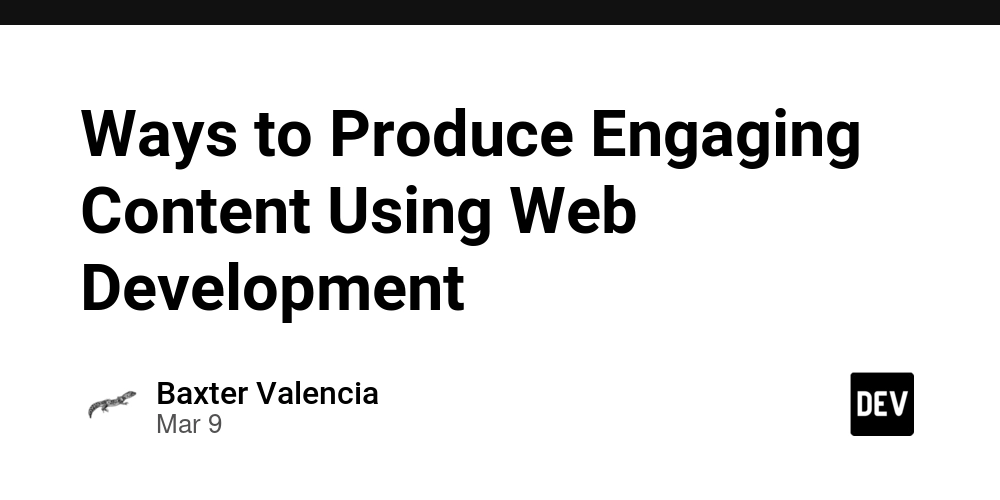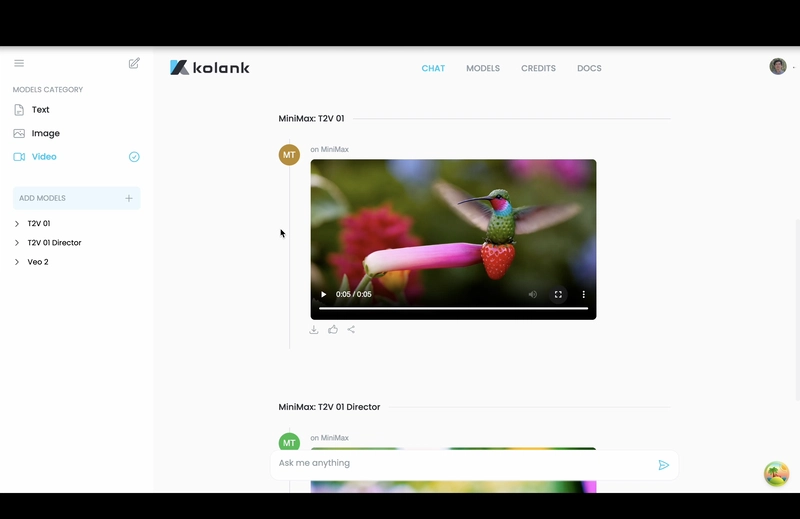Ways to Produce Engaging Content Using Web Development
In the modern online environment, creating shareable content transcends compelling writing. It begins with a well-designed website that enthralls visitors and motivates them to connect and share your content across social media platforms. With the fast-changing nature of web design trends, it's crucial for businesses to stay ahead of the curve, especially in the near future, where user demands and technology will continue to shift. A stunning website can greatly boost your business by creating an engaging atmosphere that connects with your audience. This article will examine key web design principles that intertwine with effective digital marketing strategies, leading you through typical design mistakes and how to prevent them. You will further discover the importance of mobile-first design, the science behind color usage, and how to optimize your site for improved SEO outcomes. Whether redesigning your current site or launching a new webpage, understanding these elements will set you up for success in a fierce online environment. Vital Web Design Trends of the Upcoming Year As we look towards the forthcoming year, a handful of key web design trends come to the forefront that businesses should not overlook. One significant trend is simplicity, which highlights simple visuals and minimal user distractions. This method not only boosts user experience but also is in line with the developing user preferences for fast and direct interactions. By using clean designs, companies can present their messages more clearly while preserving an aesthetically pleasing interface. Another critical trend is the rise of immersive experiences through innovative technologies like augmented reality and virtual reality. https://writeablog.net/codecharley37/unleashing-the-impact-of-visual-telling-stories-in-web-development-and-promotion are becoming more user-friendly and are providing novel opportunities for brands to interact with users on a more significant level. Websites that feature AR and VR components provide hands-on experiences that can fascinate visitors, foster engagement, and ultimately prompt shares across social networks. Implementing these trends can differentiate businesses in the marketplace and demonstrate their dedication to creativity. Lastly, the focus on accessibility in web design is gaining substantial importance. Designers are steadily acknowledging the need of creating websites that serve all users, including those with impairments. Following accessibility standards not only expands the audience reach but also shows a brand’s ethical considerations. As more consumers prioritize inclusivity, websites that emphasize accessibility will most likely see a stronger connection with their users and enhanced dissemination of their material. The Convergence of SEO and Web Design A thoughtfully crafted website is not just about aesthetic appeal; it plays a crucial role in SEO. Search platforms favor websites that provide a great user experience, which is strongly influenced by design elements. From intuitive navigation to responsive design, SEO thrives when web design principles are implemented. Implementing responsive layouts ensures that your site appears and operates well on all devices, which is crucial as mobile traffic continues to increase. Furthermore, website loading speed is a significant factor that impacts both user experience and SEO positions. Visitors are more prone to leave a site that delayss to load, leading to greater bounce rates. Code Charley , recognizing this, will favor faster websites in SERPs. By optimizing images, utilizing browser caching, and minimizing the use of large scripts, web designers can greatly boost site performance and maintain user interest. In addition, the integration of SEO into web design goes further than purely technical factors. The psychology of colors, typography, and layout can influence user behavior and conversion rates. By applying the right colors and designs thoughtfully, you can boost user engagement and drive actions, such as joining mailing lists or buying products. When web design and SEO function together, they create a strong synergy that enhances online visibility and propels business success. Typically Seen Pitfalls in Web Design and Their Fixes One common mistake in web design is ignoring the significance of mobile-first approach design. With the growing number of users accessing websites on mobile devices, failing to optimize for mobile can greatly impact user experience and engagement. The answer is to adopt a adaptive design approach that ensures your website looks great and operates well on all screen sizes. Prioritizing mobile usability not just enhances user satisfaction but additionally improves search engine rankings, making your website more accessible. Another frequent error is ignoring website loading speed. A slow website can annoy users, leading to increased bounce rates and decreased conversion rates. To tackle th

In the modern online environment, creating shareable content transcends compelling writing. It begins with a well-designed website that enthralls visitors and motivates them to connect and share your content across social media platforms. With the fast-changing nature of web design trends, it's crucial for businesses to stay ahead of the curve, especially in the near future, where user demands and technology will continue to shift.
A stunning website can greatly boost your business by creating an engaging atmosphere that connects with your audience. This article will examine key web design principles that intertwine with effective digital marketing strategies, leading you through typical design mistakes and how to prevent them. You will further discover the importance of mobile-first design, the science behind color usage, and how to optimize your site for improved SEO outcomes. Whether redesigning your current site or launching a new webpage, understanding these elements will set you up for success in a fierce online environment.
Vital Web Design Trends of the Upcoming Year
As we look towards the forthcoming year, a handful of key web design trends come to the forefront that businesses should not overlook. One significant trend is simplicity, which highlights simple visuals and minimal user distractions. This method not only boosts user experience but also is in line with the developing user preferences for fast and direct interactions. By using clean designs, companies can present their messages more clearly while preserving an aesthetically pleasing interface.
Another critical trend is the rise of immersive experiences through innovative technologies like augmented reality and virtual reality. https://writeablog.net/codecharley37/unleashing-the-impact-of-visual-telling-stories-in-web-development-and-promotion are becoming more user-friendly and are providing novel opportunities for brands to interact with users on a more significant level. Websites that feature AR and VR components provide hands-on experiences that can fascinate visitors, foster engagement, and ultimately prompt shares across social networks. Implementing these trends can differentiate businesses in the marketplace and demonstrate their dedication to creativity.
Lastly, the focus on accessibility in web design is gaining substantial importance. Designers are steadily acknowledging the need of creating websites that serve all users, including those with impairments. Following accessibility standards not only expands the audience reach but also shows a brand’s ethical considerations. As more consumers prioritize inclusivity, websites that emphasize accessibility will most likely see a stronger connection with their users and enhanced dissemination of their material.
The Convergence of SEO and Web Design
A thoughtfully crafted website is not just about aesthetic appeal; it plays a crucial role in SEO. Search platforms favor websites that provide a great user experience, which is strongly influenced by design elements. From intuitive navigation to responsive design, SEO thrives when web design principles are implemented. Implementing responsive layouts ensures that your site appears and operates well on all devices, which is crucial as mobile traffic continues to increase.
Furthermore, website loading speed is a significant factor that impacts both user experience and SEO positions. Visitors are more prone to leave a site that delayss to load, leading to greater bounce rates. Code Charley , recognizing this, will favor faster websites in SERPs. By optimizing images, utilizing browser caching, and minimizing the use of large scripts, web designers can greatly boost site performance and maintain user interest.
In addition, the integration of SEO into web design goes further than purely technical factors. The psychology of colors, typography, and layout can influence user behavior and conversion rates. By applying the right colors and designs thoughtfully, you can boost user engagement and drive actions, such as joining mailing lists or buying products. When web design and SEO function together, they create a strong synergy that enhances online visibility and propels business success.
Typically Seen Pitfalls in Web Design and Their Fixes
One common mistake in web design is ignoring the significance of mobile-first approach design. With the growing number of users accessing websites on mobile devices, failing to optimize for mobile can greatly impact user experience and engagement. The answer is to adopt a adaptive design approach that ensures your website looks great and operates well on all screen sizes. Prioritizing mobile usability not just enhances user satisfaction but additionally improves search engine rankings, making your website more accessible.
Another frequent error is ignoring website loading speed. A slow website can annoy users, leading to increased bounce rates and decreased conversion rates. To tackle this issue, focus on optimizing images, minimizing server response times, and utilizing browser caching. Regularly check your website’s speed with tools like Google PageSpeed Insights, and continuously work on boosting load times to keep visitors occupied and boost your SEO efforts.
In conclusion, many designers struggle to grasp the difference between user experience (UX) and user interface (UI), resulting in a website that looks good but is difficult to use. To create a truly efficient web design, emphasize both aspects by making sure that your site's layout, buttons, and navigation are user-friendly. Conduct user testing to collect feedback and make required adjustments, making sure that visitors can readily find what they are looking for while enjoying a seamless browsing experience.




















































%20Abstract%20Background%20112024%20SOURCE%20Amazon.jpg)






















































































































![[The AI Show Episode 142]: ChatGPT’s New Image Generator, Studio Ghibli Craze and Backlash, Gemini 2.5, OpenAI Academy, 4o Updates, Vibe Marketing & xAI Acquires X](https://www.marketingaiinstitute.com/hubfs/ep%20142%20cover.png)
























































































































































































































































-Nintendo-Switch-2-–-Overview-trailer-00-00-10.png?width=1920&height=1920&fit=bounds&quality=80&format=jpg&auto=webp#)





















_Anna_Berkut_Alamy.jpg?#)













































































































![YouTube Announces New Creation Tools for Shorts [Video]](https://www.iclarified.com/images/news/96923/96923/96923-640.jpg)





































































![[Weekly funding roundup March 29-April 4] Steady-state VC inflow pre-empts Trump tariff impact](https://images.yourstory.com/cs/2/220356402d6d11e9aa979329348d4c3e/WeeklyFundingRoundupNewLogo1-1739546168054.jpg)





























































